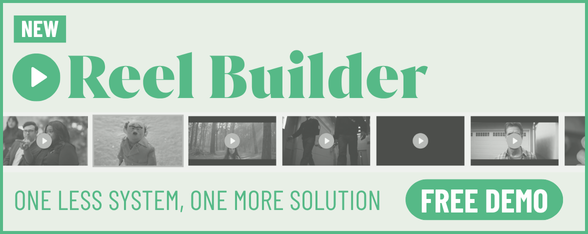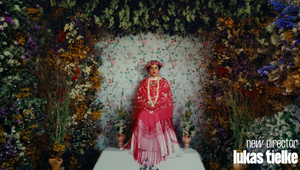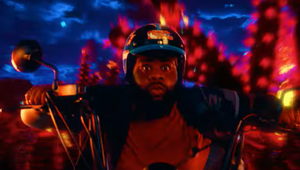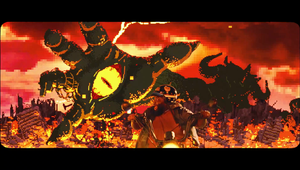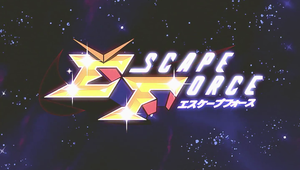
Lukas Tielke on Why Now Is the Time for More Brave Creatives

Lukas Tielke’s work speaks volumes, having worked with brands such as Renault, BMW, Red Bull, Porsche. From high-octane car commercials to cutting-edge fashion campaigns, his films captivate with an unwavering focus on raw, authentic human emotion.
Constantly pushing creative boundaries, Lukas approaches every project with fresh ideas, making him a trusted collaborator who elevates your vision and pushes it further to create outstanding work.
As a self-taught filmmaker, Lukas combines a hands-on approach with a versatile skill set, enabling him to adapt seamlessly to any environment and deliver exceptional results every time.
Lukas sat down with LBB to discuss incorporating new technology into his sets, the unplanned moments that demand quick thinking, and his best work…
LBB> What are some upcoming projects that you’re excited about? Tell us a bit about them.
Lukas> I just came back from a two-night shoot on a racetrack in Madrid, which was a lot of fun. It’s a mix of real-world shots and VFX, built around a cool storyline – I’m really looking forward to seeing it come together.
I’m also in the early planning stage of a new passion project for the end of the year, centred around urban life in various cities. But it’s still in the early process, so there’s not much more to tell.
LBB> What excites you in the advertising industry right now, as a director? Any trends or changes that open new opportunities?
Lukas> I know a lot of people are afraid of AI, but I feel almost the opposite. I think AI brings a lot of new opportunities to the industry, especially when used smartly.
It can really enhance your visuals without blowing the budget, or help you pre-visualise ideas in a way that gets everyone thinking more strategically about the outcome of the film. The industry is changing rapidly, but with that change comes new doors to open and more tools to play with.
One trend I really love right now is the return to longer, more composed shots – slower pacing, static frames, subtle slow motion. It’s a shift from the hyper-dynamic era we’ve just come out of. I still enjoy fast cuts and energy, but I’m much more interested these days in exploring intensity through contrast – playing with rhythm and the speed of shots in a more deliberate way.
LBB> What elements of a script set one apart from another, and what sort of scripts get you excited to shoot them?
Lukas> Right now, I sometimes find it hard to tell which direction a brief is really going. Most of the time, you get AI-generated images and a video, which of course helps sell the concept to the client, but for us directors, it can make it harder to judge the true aesthetic and feel they’re after.
When a brief includes mood references, you can usually tell whether they’re aiming for something more analogue and real, or more polished and high-gloss.
That’s why, now more than ever, the core idea needs to be really strong. We need brave creatives who are willing to go on a journey with you, who want to try something fresh and push for something truly standout. Any board that feels different from everything else out there has the potential to become something beautiful and successful.
Visually, we’re almost limitless now. With AI and VFX, you can create any world you imagine, so it becomes even more important to come back to strong storytelling and smart, original core ideas.
LBB> How do you approach creating a treatment for a spot?
Lukas> Before I dive into a treatment, I always try to start by listening to my gut. What’s the USP of the film? What makes it special – something that can truly stand out?
I’ve learned over time how important it is to see the project not just through my own creative lens, but also from the client’s perspective.
That took me a while to grasp, because at first, of course, you just want to make something you love. But creating something that lives within your own aesthetic world while still aligning with the client’s and agency’s goals is key to building trust and making something meaningful together.
My process usually starts with a rough session where I jot down the basic storyline. In the days after, I go deeper, constantly refining and questioning every beat. I build in mini check-ins with myself: Is this the direction we want to go? Is the climax strong enough? Is the opening impactful? I work toward making the film feel smooth, cohesive, and emotionally clear, while always protecting the USP and the core idea that sparked it in the first place.
LBB> If the script is for a brand you’re not familiar with or a new market, how important is it to understand the strategic and contextual side? How do you approach it?
Lukas> For me, it’s almost a bonus if I don’t know too much about a brand or its previous campaigns. Of course, with well-known brands, you naturally have some feeling for them, but I actually enjoy stepping into the process more like a consumer. It lets me start with a blank slate and build something that can connect with people who might not already be familiar with the brand.
Once I’ve gone through that first intuitive phase, I dive deeper into research – reading up on the brand, understanding the context, and building a more strategic view. That’s why the initial agency brief is so important. They’ve often worked with the client for months or years, and they have a strong sense of the brand’s DNA and direction. Their insights are crucial for grounding the treatment in reality.
But I also think it’s valuable to bring in a director with a neutral, objective view – someone who can look at the topic with fresh eyes and add something unexpected through their own perspective, taste, and aesthetic.
LBB> For you, what is the most important working relationship a director should have during a production – and why?
Lukas> For me, the most important relationship on set – and throughout the entire production – is with the producer. Budgets are tight right now, but expectations haven’t shrunk. The films still need to feel just as big, even when timelines are shorter and you’re trying to squeeze three shoot days into two.
That’s why having the skills to make something feel big in a smart, resourceful way is more valuable than ever. I learned a lot from my years doing music videos and passion projects – how to stretch a tight budget and still get something cinematic.
And even when the budgets are bigger, it doesn’t always mean you have more time or freedom on set. A lot of that money goes into talent, location fees, or post. So it becomes crucial to be in sync with your producer, making sure the money ends up on screen and not wasted on things that don’t serve the film.
LBB> What type of work are you most passionate about—genre, subject matter, or visual style?
Lukas> I’m always trying to redefine myself and explore new directions. I’m drawn to very different styles and approaches – on one hand, I love the dynamic, visually driven world you often see in my car commercials, especially when it comes to transitions.
But even with all the movement and energy, I always aim to keep it organic. I’m not the biggest fan of relying too heavily on VFX, especially for car transitions. I prefer finding new, clever ways to rig a camera or build transitions in-camera – playing with different speeds, combining tools like drones, rigs, and Steadicams to create movements that feel fresh and almost unseen.
At the same time, I’m equally passionate about the opposite: beautifully composed static shots with emotional weight. I love capturing intimate moments and translating the feeling of the actor or talent into the visual texture of the frame.
My goal is to bring those two worlds together – to play with rhythm, dynamics, and style in a way that feels cinematic but also emotionally grounded. I’m a big fan of classic cinematography – stylish, rich visuals with strong colour grading and a polished finish.
LBB> What misconception about you or your work do you most often encounter, and why is it wrong?
Lukas> I wouldn’t necessarily call it a misconception, but I do think people often judge your entire body of work based on the last two or three films you made. I see it happen a lot – when I’m introduced to an agency, they might get a deck full of my car work, for example, and suddenly I’m labelled ‘the car guy.’ Or if they ask for something with fewer transitions and I send a cleaner, more polished piece, that one film might become the only thing they associate with me from that point on.
It’s limiting, but it also shows how quickly your image in the industry can shift. One or two projects can completely reshape how people see you, which, in a way, is also exciting. It means you can always reinvent yourself. If you’re an established director and want to redefine your direction, just a few strong, fresh pieces can open up new creative doors and attract very different kinds of boards.
LBB> What’s the craziest problem you’ve come across in a production—and how did you solve it?
Lukas> I think on every set, problems come up – it’s never exactly how you planned it. The weather can be unpredictable, talent might get sick, transitions don’t work the way you imagined, or the art department brings something that feels off. Most of the time, these issues come down to gaps in communication beforehand.
I’ve had car shoots where everything was designed around a dynamic driving setup, with a speed car for the camera rig, only to arrive on set and be told, “The hero car can’t go faster than 15 km/h.” No one mentioned it earlier. So in that moment, you have to adapt quickly and find creative solutions. We ended up shooting a lot of scenes at just five frames per second, keeping the camera movements steadier to create the illusion of speed. In the end, it looked pretty cool – but it definitely wasn’t how we had planned it.
I try to mentally re-block the film in real time – build new versions of it in my head and problem-solve on the fly. Weather has definitely been one of the biggest challenges I’ve faced – storms, inaccessible locations due to landslides, and sudden schedule changes. But honestly, I also love these moments. They force you to stay sharp, to be flexible, and sometimes, they lead to more spontaneous, unexpected ideas that make the film even better.
LBB> How do you balance collaboration with agency/clients while also protecting your vision?
Lukas> This is definitely a question every director can relate to. I think you win a pitch because you’re an artist. The agency and client choose you for your unique perspective – they want something bold, different, reflecting your style. But once you enter pre-production, that role starts to shift. Suddenly, it becomes less about being purely an artist and more about being a great collaborator.
From there on, it’s just as much about soft skills – finding diplomatic ways to make everyone happy, navigating feedback, and adapting without losing your mind. You often have to let go of the pure version of your initial idea, and that’s not always easy. For directors who really want to push boundaries, that process can be tough. Personally, my motivation has always been the final film. So when that vision gets diluted, it can feel frustrating.
But one of the biggest lessons over the years has been understanding that some jobs are more about service – about being a trusted craftsman – while others give you full creative freedom. The more experience I gain, the more trust I feel from the people I work with, and that’s incredibly rewarding.
One thing I’ve noticed recently, though, is that more clients are blocking directors from doing director’s cuts. That’s worrying. If we take away the ability to express ourselves fully, even just in our own cut of the film, we risk losing motivation and creativity. That’s something the industry needs to keep a close eye on.
LBB> What are your thoughts on mentoring and bringing new talent into the industry?
Lukas> I really enjoy mentoring and introducing younger filmmakers to the industry. I believe collaboration is the only way forward. I often communicate with people on Instagram – answering questions, exchanging ideas, and reviewing boards. I think that openness is important.
Of course, it’s not always possible to bring people on set, especially with tight budgets or remote locations. But when it works, I love the process. I actually learn a lot from younger talent – the way they think, what matters to them, how they perceive images. Platforms like TikTok and Instagram have shifted the way commercials are consumed, and it’s fascinating to see how real, unpolished visuals are gaining relevance.
Everything moves in waves, and working with new voices helps me stay open to that change. There are so many talented kids out there who are editing and creating from a young age, long before many of us had access to that kind of tech. Their visual instincts are sharp, and it’s exciting to help guide that energy and give back to the craft.
LBB> Your work is now presented in many formats. How much do you keep that in mind while working?
Lukas> I’ve never really run into major problems shooting for different formats, but I have definitely adapted the way I shoot to make sure everything works across all platforms. I always have multiple aspect ratios in mind on set, and I often monitor the different formats while shooting to make sure nothing essential gets lost.
It’s definitely harder now to shoot in cinemascope, especially if you know there will be vertical versions. Everyone involved really needs to be aware that you’ll lose parts of the frame. But with open gate sensors and new lens technologies – like ones that still give you an anamorphic look while using the full sensor – it’s become a lot more manageable.
I try to frame product shots a bit wider when I know they’ll be repurposed vertically, especially for pack shots. And while fast-cut edits can be tricky for social formats, I just plan accordingly – sometimes that means redefining the pace for vertical cuts.
What’s really changed is the priority of formats. A few years ago, the main film was everything, and the social assets were almost an afterthought. Now, the majority of the campaign’s views happen on those social assets – so they’ve become central. That shift means you have to think more strategically right from the beginning, and plan your shoot in a way that supports all final deliverables without compromising the core idea.
LBB> What’s your relationship with new technology like (AI, virtual production, etc.)?
Lukas> I really enjoy incorporating new technology into my workflow – especially when it challenges the way I approach things. I work with AI almost daily now. It’s changed how I scout locations, how I think about post-production, and even how I visualise entire scenes.
I can now imagine a shot and instantly modify the background or texture, which opens up creative doors without massive costs. Of course, there’s a bit of fear too – sometimes it feels like there are fewer briefs for real-location shoots. But I don’t think that approach will disappear. Just like digital didn’t replace film entirely, real-world shooting will always have a place. You simply can’t fully emulate it.
In that sense, AI is a tool – a powerful one – but it doesn’t replace the craft. And in a way, it can make shooting practically feel like a creative statement again. For me, AI is already a regular part of my toolbox, and I think its role will only grow in the years ahead.
LBB> Which pieces of your work do you feel show what you do best, and why?
Lukas> Renault ‘Voyage’– Shot with Quad Films in Paris, I love how we integrated the singing part in the car, along with the spontaneous little moments we captured using a second camera. It blends authentic, almost analogue moments with glossy car shots and modern transitions without losing elegance. Shot by Denis Guth.
‘BURRNESHA’ – Every year, I try to do at least one film just for myself. Burrnesha was one of the most powerful experiences I’ve had. We drove through Albania, capturing the stories of real Burrnesha. The rawness, the emotion, and the unexpected moments made this incredibly special. Jens Wirtzfeld’s cinematography, combined with Moritz Staub’s sound design, helped make this piece as intimate and atmospheric as it is.
‘Maya’– A passion project filmed during a traditional Spanish festival, Maya explores the life cycle of a flower – birth, death, and rebirth – through poetic visuals. Captured by the amazing Slovakian DP Anna Smoronova, this piece feels both honest and cinematic. It was a beautiful experience to shoot something so emotional and pure in such an authentic setting.
‘BMW M2’ – I’ve always been drawn to the idea of falling into new worlds. For this one, we leaned into that concept with a video game-inspired car commercial that still feels cinematic. It blends stylized transitions and surreal vibes with dreamlike storytelling, all grounded in a sleek, visual approach.






